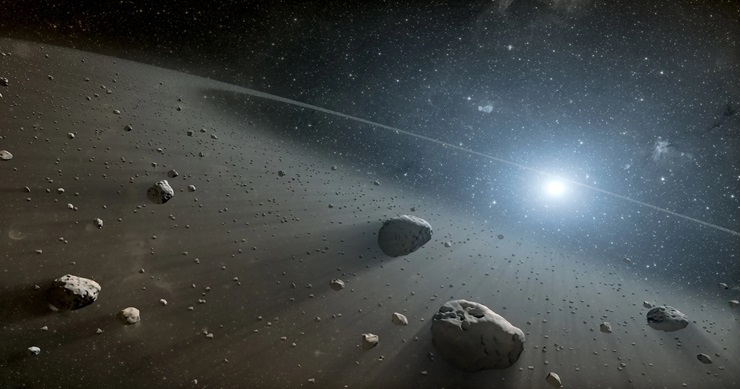A number of asteroids in our solar system are so dense that no known element on Earth can account for their properties. These asteroids, known as compact ultra dense objects (CUDOs), may be composed of naturally occurring “superheavy elements” that are not listed in the periodic table, according to new research. The existence of these superheavy elements could answer many questions about how these elements were formed and why they have not been discovered outside of asteroids yet.
One such CUDO is 33 Polyhymnia, a rock located in the main asteroid belt between Mars and Jupiter. Despite its small size and vast distance from Earth, scientists have long been puzzled by its density. Previous research suggested that the density of CUDOs like 33 Polyhymnia could be explained if the objects were filled with mysterious dark matter particles. However, a recent study has mathematically demonstrated that the existence of CUDOs can be explained not with dark matter, but with unknown classes of chemical elements beyond the periodic table that are much denser than osmium.
Scientists have long debated whether elements heavier than oganesson, the last one in the periodic table, could occur naturally and be stable. These superheavy elements are highly radioactive and decay within milliseconds. However, there is a theoretical region of the periodic table termed an “island of stability” of superheavy elements around atomic number 164. At this weight, elements might not undergo rapid radioactive decay and would exist for short periods of time. New calculations by the research team agree with this prediction.
The researchers theorized the atomic structure of hypothetical superheavy elements using a model of an atom known as the Thomas-Fermi model. They found that elements with atomic numbers near 164 would have a density somewhere between 36 and 68.4 grams per cubic centimeter. This range is close to the calculated density for 33 Polyhymnia. The results suggest that superheavy elements, if they really exist, could explain the massive density seen in the space rock and others similar to it. However, the possibility of dark matter cannot be fully ruled out.
Key Takeaways:
- Some asteroids in our solar system are denser than any known element on Earth, suggesting they may contain naturally occurring “superheavy elements” not yet listed on the periodic table.
- The existence of these ultra-dense objects, known as compact ultra dense objects (CUDOs), could potentially be explained by the presence of unknown chemical elements denser than osmium, rather than dark matter as was previously suggested.
- Scientists theorize that these superheavy elements could be stable enough to exist within our solar system, with a density between 36 and 68.4 grams per cubic centimeter, potentially explaining the massive density seen in certain asteroids.
“A handful of asteroids in our solar system are so dense that no element on Earth can explain their properties. Instead, they may be made of naturally occurring ‘superheavy elements’ beyond those listed in the periodic table — our current best catalog of 118 chemical elements — new research suggests.”
More details: here


Leave a Reply